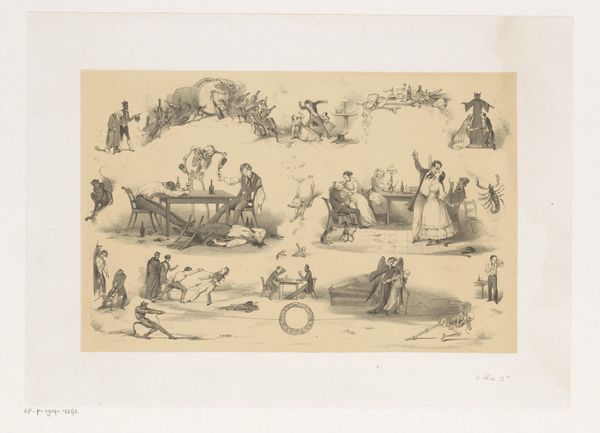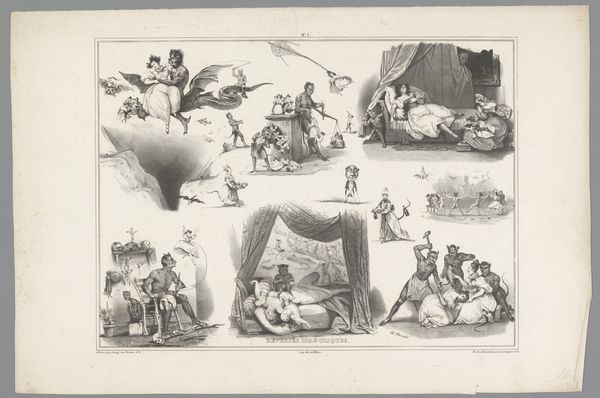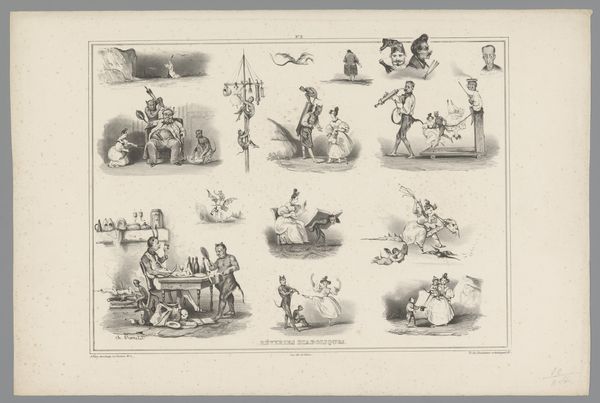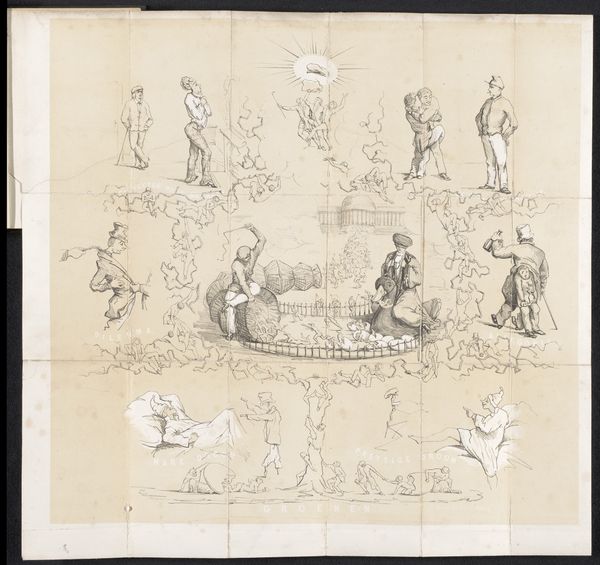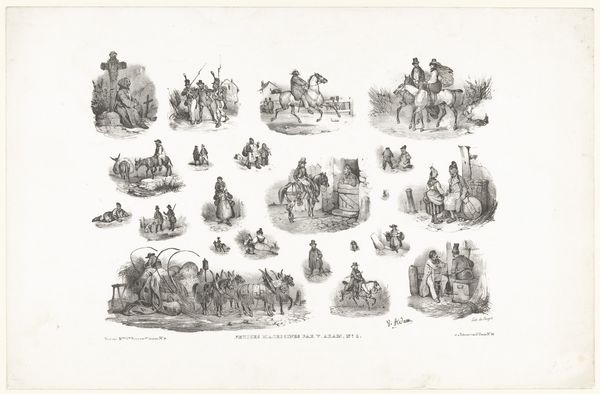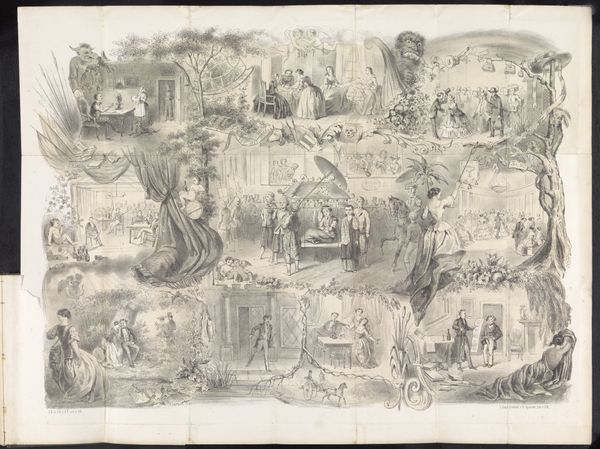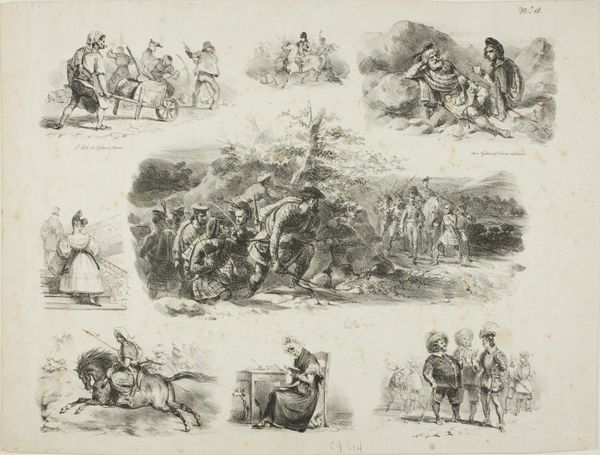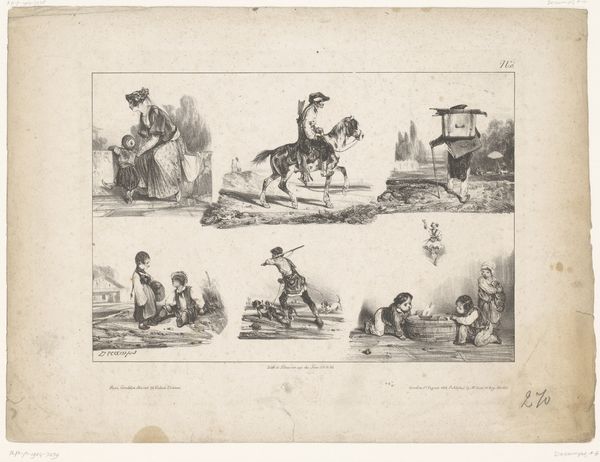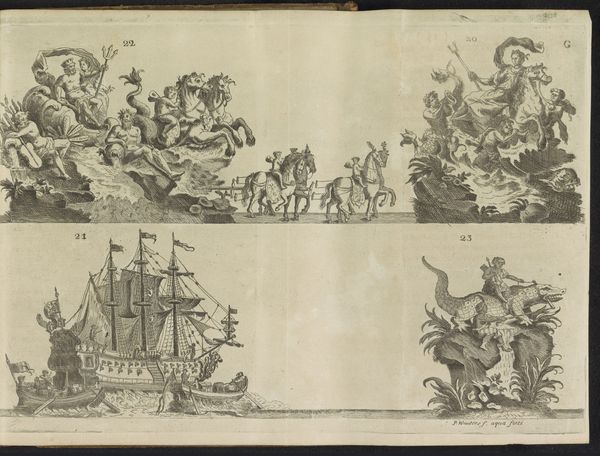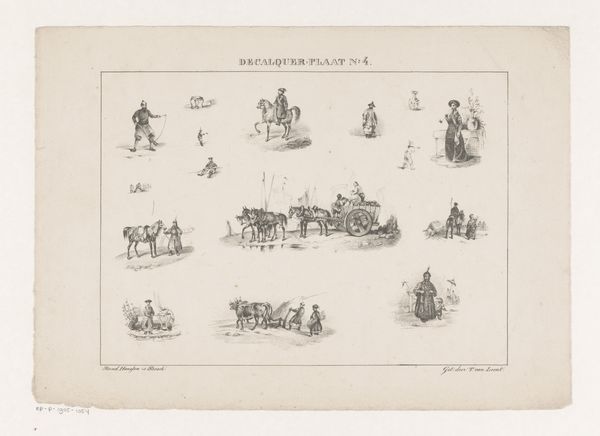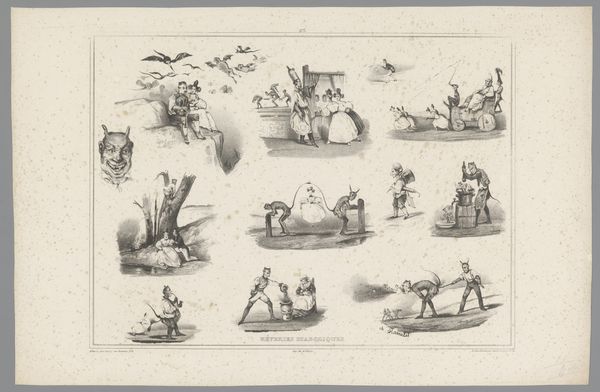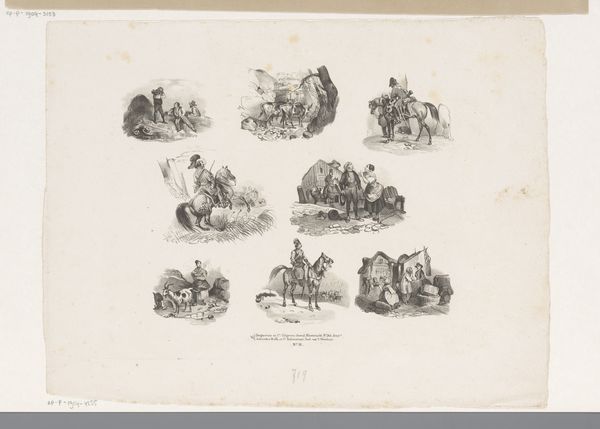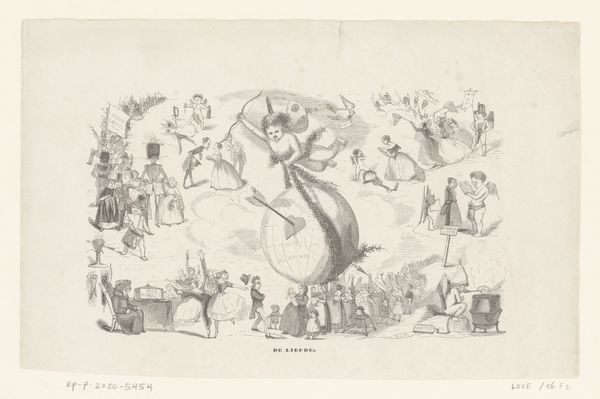
drawing, print, ink, engraving
#
drawing
# print
#
caricature
#
ink
#
romanticism
#
genre-painting
#
engraving
Dimensions: height 226 mm, width 302 mm
Copyright: Rijks Museum: Open Domain
Curator: Well, this is certainly…intense. A chaotic panorama of social commentary, wouldn't you say? Editor: Pandemonium, yes, visually overwhelming in its composition. It's an engraving, so we're looking at careful application of ink, a mechanically reproducible image, printed on paper. Given the detail, the hand of the artisan must have been quite skilled. What can you tell us about it? Curator: We're looking at a print titled "Spotprent in Leidse studentenalmanak, 1847," essentially, a satirical cartoon from a Leiden student almanac of 1847. It was made by Alexander Ver Huell, in the Romantic style. Editor: Right. Romanticism often idealized the past, but here, it seems Ver Huell's using the visual language of Romanticism, this detailed printmaking tradition, to critique his contemporary moment. It looks like excessive drinking and its consequences is the focus here. See the progression across the scenes from jovial camaraderie to…skeletons drinking? Curator: Precisely! There’s an arc, isn't there? From merriment, romance and togetherness to fighting, sickness, death, and eternal damnation represented by devils pulling poor souls with rope in hell. Editor: The artist even employs caricatures of these poor figures; exaggerating and ridiculing behaviors and body types as tools of satire, really. I wonder about the almanac itself. What paper was used? Was it locally sourced? Who was printing it? Curator: Material considerations indeed! The social context is everything, of course. These student almanacs were a breeding ground for subversive humor. They offered these young intellectuals a platform to challenge authority and poke fun at social norms. It’s a potent brew of ink, paper, and rebellious spirit! Editor: And distributed to students, reproduced, consumed and disposed of in some form afterwards… The cycle of production is endless. Even today, we’re pulling out it of obscurity and interpreting the meanings within. Curator: Exactly. And I can't help but feel the piece carries a darker sentiment: a lament for lost innocence, perhaps, or a cautionary tale whispered from the shadows of fleeting youth and the transience of existence? Editor: Well, at least we are able to see beyond the chaos into the process of art making by exploring its roots, materials, and the world of which it’s composed of.
Comments
No comments
Be the first to comment and join the conversation on the ultimate creative platform.
